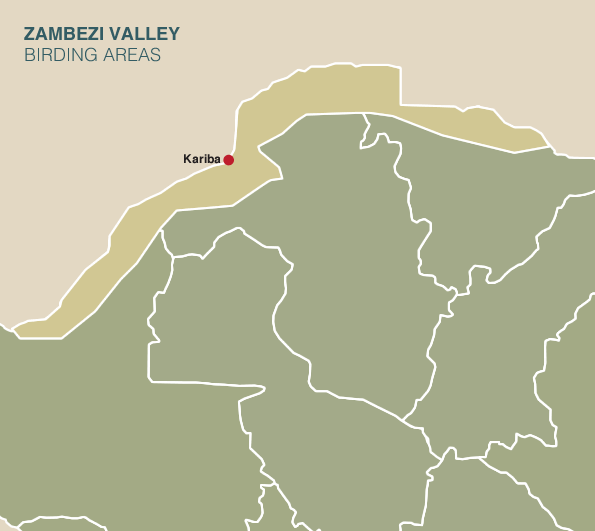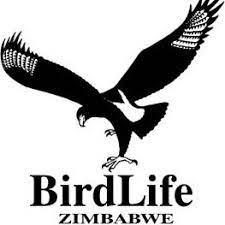BIRDING IN ZIMBABWE
Zambezi Valley

Mana Pools National Park
The Lower Zambezi
Matusadona National Park

Birding areas in the Zambezi Valley
The Lower Zambezi
Mana Pools National Park
Matusadona National Park / Kariba
Welcome to birding in the Zambezi Valley
The very words Zambezi Valley conjures up images of heat, haze and mopane bees, hunters and long-gone explorers, perils and dangerous game, and of course the legendary Zambezi River itself. The area is of course much tamer these days though not without its perils! The Kariba Dam has replaced the river in the Gwembe Valley and is now more a playground for holidaymakers and very much different from its former days, with safari lodges and Matusadona National Park on its shores. Downstream through the lower Zambezi Valley the aspect of the river has been very much altered by the dam and is bordered on the south by safari areas and Mana Pools National Park, and to the north by Zambia.
Read about the Mana Pools National Park on this link. The remainder of the valley is not particularly accessible unless you are residing in one of the safari areas, but Chirundu is a central point from which you can access the river upstream of Mana Pools.
Read about the Rifa birds in Honeyguide Vol. 65(1). There are a few springs on the main road near Chirundu and some inland pans in mopane woodland, but the public requires permission from National Parks to explore areas off the road. Visitors to Rifa have access to the floodplain, mopane and acacia woodland and the adjacent Zambezi River.
Rifa is run by the Zimbabwe Hunters Association and is busy through the dry season with educational camps for school children – contact them for availability.
In Chirundu there are fishing camps and places to stay along the river and you can hire a boat to bird up and down the river.
Waterbirds are likely to be your main focus and the river hereabouts has many islands with reedbeds, narrow channels full of interesting birds, and open sandbanks when the river level is down. Sandbars are good for waders but this habitat, used by African Skimmers and White-fronted Plovers, is often flooded by water released from Kariba. Herons and egrets frequent the banks but check dense overhanging trees for Black-crowned and White-backed Night-herons. Rufous-bellied Herons hunt on waterweed but the Dwarf Bittern and Striped Crakes will be on inland pans during the rains. To find Rock Pratincoles a journey up to at least C Camp is required; check sandstone outcrops in the river isolated from the shore from around September to December. White-browed Coucals are quite common along the banks and in reedbeds. Southern Carmine and White-fronted Bee-eater colonies are great to watch and there are a number of colonies along high banks – check for Horus Swift and Brown-throated Martins nesting in old holes – and Blue-cheeked are common during the rains. A good place to find Lesser Masked-weavers is on the branches of trees that have fallen into the river.
